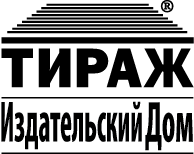Ekaterinburg, Ekaterinburg, Russian Federation
Yekaterinburg, Ekaterinburg, Russian Federation
Ekaterinburg, Ekaterinburg, Russian Federation
Ekaterinburg, Ekaterinburg, Russian Federation
Ekaterinburg, Ekaterinburg, Russian Federation
Ekaterinburg, Ekaterinburg, Russian Federation
Ekaterinburg, Ekaterinburg, Russian Federation
Background. The problem of increase in efficiency of endodontic treatment is relevant nowadays. Treat the decisive factors affecting quality of endodontic treatment: machining, irrigation and sealing of root channels. Machining of root channels does not allow to remove the greased layer. So an integral part of endodontic treatment is the irrigation of the root channel. Objectives ― to choose an optimum way of activation of irrigational solutions for removal of the greased layer in root channels with difficult anatomy. Methodology. The research of 30 intact painters removed on medical indications is conducted. Activation of irrigational solution was carried out by a sound the device EndoActivator and the ultrasonic IRRI K file on the device VDW.ULTRA. in root channels with simple and difficult anatomy. An object of a research was the internal wall of the root channel with the greased layer on the surface of dentine of the root. The research of samples was conducted by means of the scanning electronic microscope of JSM-6390LV. Results. When machining on an internal wall of root channels on the surface of dentine the greased layer is formed. Studying of samples with simple anatomy of root channels and activation of irrigational solutions revealed that the greased layer is removed throughout. When studying samples of teeth with difficult anatomy of root channels, it is determined, partially open dentinny a tubule at activation of solutions ultrasonic or sound by methods, and completely open dentin a tubule at activation of irrigational solution by the combined method. Conclusions. Carrying out activation of solutions in root channels with simple anatomy at a stage of a finishing irrigation is identical effectively as by ultrasonic, and sound methods. Application at a stage of a finishing irrigation of a sound method of activation in teeth with difficult anatomy of root channels allows to delete more than the greased layer, than ultrasonic activation. For the purpose of increase in efficiency of clarification of the root channel in teeth with difficult anatomy expediently combined use of sound and ultrasonic methods.
ultrasonic activation, sound activation, simple and difficult anatomy of root channels, the combined activation method
1. Berezin, K. A., Blashkova, S. L., Startseva, E. Yu. (2013). Osobennosti lecheniya kornevyh kanalov slozhnoj konfiguracii [Features of root canal treatment of complex]. Fundamental'nye issledovaniya [Fundamental research], 9, 8-9. (In Russ.)
2. Gatina, E. N., Egorova, G. R., Fazylova, G. V. (2015). Sovremennye vozmozhnosti irrigacii kornevyh kanalov [Modern possibilities of root canal irrigation]. Molodoj uchenyj [Young scientist], 11, 631-635. (In Russ.)
3. Geranin, S. (2013). Aktivaciya irrigacionnyh rastvorov v ehndodonticheskoj praktike [Activation of irrigation solutions in endodontic practice]. DentArt [DentArt], 1, 45-54. (In Russ.)
4. Dmitrieva, L. A., Mitronin, A. V., Pomeshchikova, N. I., Sobkin, N. A. (2014). Optimizaciya metodov ehndodonticheskogo lecheniya. Vybor irrigacionnyh rastvorov [Optimization of endodontic treatment methods. The choice of irrigation solutions]. EndodontiyaToday [Endodontics Of Today], 2, 22-24. (In Russ.)
5. Lapteva, K. A., Shabalina, D. S., Sorokoumova, D. V., Kiseleva, D. V., Gottman, I. A. (2018). Obrazovanie smazannogo sloya pri rabote ruchnymi i mashinnymi instrymentami, sovremennyj protocol irrigacii [The formation of a lubricated layer with working by hand and machine tools, modern irrigation protocol]. Marerialy IV Mejdunarodnogo simooziuma «Aktual`nye problem stomatologii» [Materials of the IV international Symposium «Actual problems of dentistry»], 42-44. (In Russ.)
6. Rabinovich, I. M., Kornetova, I. V (2013). Opyt primeneniya vysokih tekhnologij v ehndodontii Opyt primeneniya vysokih tekhnologij v ehndodontii [Experience of application of high technologies in endodontics]. EndodontiyaToday [Endodontics Of Today], 2, 12-17. (In Russ.)
7. Rabinovich, I. M., Babichenko, I. I., Vasil'ev, A. V., Golubeva, S. A., Zakharova, K. E. (2018). Izuchenie struktury stenki kornevyh kanalov zubov posle fotodinamicheskogo vozdejstviya [Root canals dentinal wall structure after photodynamic exposure]. Stomatologiya [Stomatology], 1, 16-21. (In Russ.)
8. Ricucci, D., Siqueira, J. (2015). Kliniko-biologicheskie aspekty [Endodontology. Clinical and biological aspects]. Moscow : Azbuka, 415. (In Russ.)
9. Sorokoumova, D. V., Lapteva, K. A., Shabalina, D. S., Kiseleva, D. V., Gottman I. A. (2018). Otsenka ehffektivnosti primeneniya razlichnyh protokolov udaleniya smazannogo sloya na ehtape finishnoj irrigacii kornevogo kanala [Efficiency evaluation of different protocols for removal of smear layer at the stage finish irrigation of the root canal]. Vestnik ural'skoj medicinskoj akademicheskoj nauki [Journal of ural medical academic science], 15, 5, 677-684. (In Russ.)
10. Sorokoumova, D. V., Lapteva, K. A., Shabalina, D. S., Kiseleva, D. V., Gottman I. A. (2018). Sravnitelnaya otsenka effectivnosti primeneniya rastvorov etilendiamintetrauksusnoj kisloty i limonnoj kisloty na etape finishnoj irrigacii [Comparative evaluation of the efficiency of the use of solutions with ethylenediaminetetraacetic acid and citric acid at the stage of final irrigation]. Medicina, nauka i obrazovanie [Medicine, science and education],144-146. (In Russ.)
11. Tsarev, V. N., Podporin M. S., Ippolitov E. V. (2017). Primenenie skaniruyush`ej elektronnoj mikroskopii i bioreactora dlya otsenki eradikatsii mikrobnoj bioplenki kornevyx kanalov pri endodonticheskom lechenii [The application of scanning electronic microscopy and bio-reactor for evaluating eradication of microbial bio-film of root channels under endodontic treatment]. Klinicheskaya labaratornaya diagnostika [Clinical laboratory diagnostics], 62 (8), 506-511. (In Russ.)
12. Amato, M., Pantaleo, G., Abtellatif, D., Blasi, A., Gagliani, M., Iandolo, A. (2018). An in vitro evaluation of the degree of pulp tissue dissolution through different root canal irrigation protocols. Journal Conserv Dent, 21 (2), 175-179.
13. Caputa, P. E., Retsas, A., Kuijk, L., Chávez de Paz, L. E., Boutsioukis, C. (2019). Ultrasonic Irrigant Activation during Root Canal Treatment: A Systematic Review. Journal of Endodontics, 45 (1), 31-44.
14. De Gregorio, C., Estevez, R., Cisneros, R., Paranjpe, A., Cohenca, N. (2010). Efficacy of Different Irrigation and Activation Systems on the Penetration of Sodium Hypochlorite into Simulated Lateral Canals and up to Working Length: An In Vitro Study. Journal of Endodontics, 36 (7), 1216-1221.
15. Donnermeyer, D., Wyrsch, H., Burklein, S., Schafer, E. (2019). Removal of Calcium Hydroxide from Artificial Grooves in Straight Root Canals: Sonic Activation Using EDDY Versus Passive Ultrasonic Irrigation and XPendo Finisher. Journal of Endodontics, 45, 322-326.
16. Elnaghy, A., Mandorah, A., Elsaka, S. (2017). Effectiveness of XPendo Finisher, EndoActivator, and File agitation on debris and smear layer removal in curved root canals: a comparative study. Odontology, 105, 178-183.
17. El Hachem, R., Le Brun, G., Le Jeune, B., Pellen, F., Khalil, I., Abboud, M. (2018). Influence of the EndoActivator Irrigation System on Dentinal Tubule Penetration of a Novel Tricalcium Silicate-Based Sealer. Dentistry Journal, 6 (3), 45.
18. Haapasalo, M., Shen, Y., Qian, W., Gao, Y. (2010). Irrigation in Endodontics. Dental Clinics of North America, 54(2), 291-312.
19. Haupt, F., Meinel, M., Gunawardana, A., Hulsmann, M. (2019). Effectiveness of different activated irrigation techniques on debris and smear layer removal from curved root canals: a SEM. Australian Endodontic Journal.
20. Karade, P., Johnson, A., Baeten, J., Chopade, R., Hoshing, U. (2018). Smear Layer Removal Efficacy Using EndoActivator and EndoUltra Activation Systems: An Ex Vivo SEM Analysis. Compend Contin Educ Dent, 39 (4), 9-12.
21. Mendonca, D., Colucci, V., Rached-Junior, F., Miranda, C., Silva-Sousa, Y., Silva, S. (2015). Effects of various irrigation/ aspiration protocols on cleaning of flattened root canals. Braz Oral Res, 29, 1-9
22. Neelakantan, P. Ounsi, H. F., Devaraj, S., Cheung, G. S. P., Grandini, S. (2018). Effectiveness of irrigation strategies on the removal of the smear layer from root canal dentin. Odontology.
23. Neuhaus, K., Liebi, M., Stauffacher, S., Eick, S., Lussi, A. (2016). Antibacterial efficacy of a new sonic irrigation device for root canal disinfection. Journal Endod, 42, 1799-1803.
24. Rodrigues, R., Zandi, H., Kristoffersen, A. et al. (2017). Influence of the apical preparation size and the irrigant type on bacterial reduction in root canal-treated teeth with apical periodontitis. Journal Endod, 43, 1058-1063.
25. Urban, K., Donnermeyer, D., Schafer, E., Burklein, S. (2017). Canal € cleanliness using different irrigation activation systems: a SEM evaluation. Clin Oral Investig, 21, 2681-2687.
26. Virdee, S., Seymour, D., Farnell, D., Bhamra, G., Bhakta, S. (2018). Efficacy of irrigant activation techniques in removing intracanal smear layer and debris from mature permanent teeth: a systematic review and meta-analysis. Int Endod J, 51, 605-621.



















